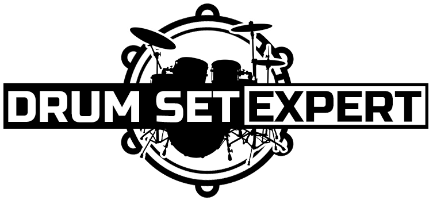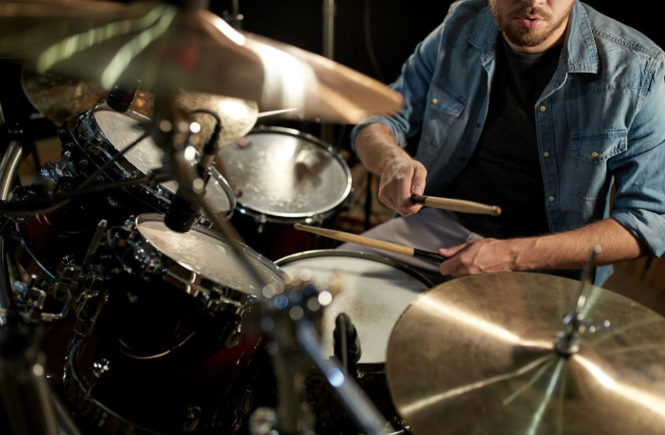Learning how to play a drum set may take some time. But as a famous saying goes “a journey of a thousand miles begins with a single step.” Anyone who dreams to become a drummer can start living this dream by first learning the basic steps.
If you want to learn how to become a drummer, the first thing you can start with is understanding the basic instruments included in a drum set. Here are the basic instruments of drum set:
The bass drum:
The bass drum creates a low pitched-booming sound when the foot pedal is struck onto it with a weighted mallet. It is the largest drum you will notice in a drum set and is usually placed at the center at the front of the drummer. The bass drum is paired with a foot pedal which is secured at its bottom edge.
The snare drum:
The snare drum is a bright and tight drum equipped with rattling metal beads located under the drum head. When setting the drum set, the snare drum is usually placed at the non-dominant side of the drummer.
The tom-tom drum:
Some drum sets have many tom-tom drums while others may only have one. A tom-tom drum is a cylindrical drum without a snare. Tom-tom drums have many types but the most common types are the floor tom, mid-tom and the high-tom.
The hi-hat cymbal:
The hi-hat cymbal is composed of two cymbals: the top and bottom cymbal which are paired together. It is usually played with a foot pedal using the left foot. When the foot hits the pedal the cymbals strike each other and separate when the pedal is released.
Other cymbals found in a drum set are the ride, the crash and splash cymbals. The ride cymbal produces a deeper and more subtle sound; the splash gives a metallic and seemingly splashing sound, like water splashing, while the crash cymbal resembles with the sound of the splash cymbal but it gives a sustained sound.
Now that you know the basic instruments of a drum set here is how to start drumming by first using your hands:
The hands are the most effective instrument of learning drumming. Sometimes when we are into a rock song we tend to beat the music using our very hands.
Before buying a pair of drum sticks and a set of drums, first use your hands and the table as your mock drum.
Do the quarter notes
In a musical bar there are four beats in a measure and these are called quarter notes. Tapping four equal beats on a table will demonstrate to you what quarter notes are. Practicing beating quarter notes with your hands will give you a good start in learning drumming.
Counting out loud is a good technique while doing the quarter notes. In online stores like the Garage Band you can get a click track or metronome to practice tracks using quarter notes.
Do the eight notes
In a musical scale each quarter note is composed of eight notes. In expressing this through hand beating you should say “1-and-2-and-3-and-4-and… every “and” should have a tap involved making an eight tap. Practice this technique steadily using the table or the top of your thighs.
Practice with both hands
Now here is the challenging part and will give you a good feeling of basic drumming. As you are counting the eight notes with your dominant hand, try tapping the table or the top of your thigh with your other hand as you say “two” and “four”. Practice it until you perfect the rhythm.
Once you are confident that you have perfected the above instructions you may now involve your feet. This is called the downbeat; when you are in the actual drum set this downbeat is what you will do on the bass drum using the foot pedal.
Now, as you do the eight notes with your dominant hand and a corresponding tap of the other hand as you say “two” and “four”, tap your feet when you say “one” or “three”.
This may be difficult for some time to do but just practice it constantly and you will soon do it with great ease as you become more familiar with its rhythm. The technique of drumming can be learned with a drum kit; however, when you are so familiar with rhythm it will be easier to learn the techniques of drumming.

